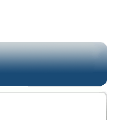Links
Software
BioImage Suite
is an open source, multi-platform image analysis suite developed at Yale University. The Differential SPECT tool within this suite can be used to employ
ISAS BioImage Suite following the detailed instructions here.
MATLAB
refers to both the numerical computing environment and to its core programming
language. MATLAB is the platform on which SPM (see below) is implemented. ISAS has been thoroughly tested with MATLAB6p1.
Statistical Parametric Mapping (SPM)
is the analysis method used for ISAS. Developed at the Department of
Cognitive Neurology, London, UK, SPM is based on the
general linear model
(GLM), and has wide applications in neuroimaging analysis. ISAS has been thoroughly tested with SPM2.
Image J
is Java-based image processing software distributed by NIH.
Using the appropriate plugins we are able to convert raw reconstructed data (Picker) into Analyze format so they can be read under SPM.
Other features of this software include creating region of interests (ROI), image editing, stacking of related images (DICOM to Analyze) and more.
MRIcron
is a standalone program that complements SPM. MRIcron allows for
efficient viewing and exporting of brain images. In addition, it allows
identification of regions of interest (ROIs, e.g. lesions). Lastly, 3D
displays with overlays can be created for presentation purposes.
NOTE: MRIcro no longer exists, current version is: MRIcron
Rview
is an image registration and analysis tool, written by Dr. Colin
Studholme, that enables simple calculation of ictal-interictal SPECT
difference images coregistered with a MRI scan.
Other Useful Links
Society for Nuclear Medicine Database
American Epilepsy Society
Blumenfeld Lab
Selected References
-
McNally KA, Paige AL, Varghese G, Zhang H, Novotny EJ, Spencer SS, Zubal
IG, Blumenfeld H. (2005). Localizing value of ictal-interictal SPECT analyzed by SPM (ISAS).
Epilepsia
, 46(9):1450–64, 2005
This study, together with the ISAS
website, provides a complete description of the ISAS
method, and validates this approach with a group of
mesial temporal and neocortical epilepsy patients.
-
Chang DJ, Zubal IG, Gottschalk C, Necochea A, Stokking R, Studholme C,
Corsi M, Slawski J, Spencer SS, Blumenfeld H (2002). Comparison of
Statistical Parametric Mapping and SPECT Difference Imaging in Patients
with Temporal Lobe Epilepsy.
Epilepsia
, 43:68-74.
ISAS was introduced in this study, and compared to conventional SPECT
difference imaging.
-
Lee JD, Kim HJ, Lee BI, Kim OJ, Jeon TJ, Kim MJ
(2000). Evaluation of ictal brain SPET using statistical parametric
mapping in temporal lobe epilepsy.
European Journal of Nuclear Medicine
27:1658-1665.
This paper is the first use of ictal SPECT analysis by SPM for seizure localization.
-
O'Brien TJ, So EL, Mullan BP, Hauser MF, Brinkmann BH, Bohnen NI,
Hanson D, Cascino GD, Jack CR, Jr., Sharbrough FW (1998).
Subtraction ictal SPECT co-registered to MRI improves clinical
usefulness of SPECT in localizing the surgical seizure focus.
Neurology
, 50:445-454.
This paper describes SISCOM (subtraction ictal SPECT coregistered with
MRI), a widely used method of ictal-interictal difference imaging
(see also below).
-
Zubal IG, Spencer SS, Imam K, Seibyl J, Smith EO, Wisniewski
G, Hoffer PB (1995). Difference images calculated from ictal
and interictal technetium-99m-HMPAO SPECT scans of epilepsy.
Journal of Nuclear Medicine
, 36:684-689.
This is the first paper which describes the use of ictal-interictal
difference imaging coregistered with MRI for epilepsy surgery
localization.
-
Scheinost D, Teisseyre TZ, Distasio M, DeSalvo MN, Papademetris X, Blumenfeld H (2009).
New Open Source Ictal SPECT Analysis Method Implemented in BioImage Suite.
Epilepsia
, In Press 2010.
This paper describes the implementation and validation of ISAS using BioImage Suite.
Back to Home
||
Jump to Top
||
Return to ISAS Home



